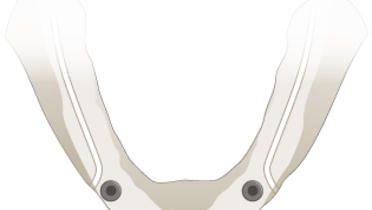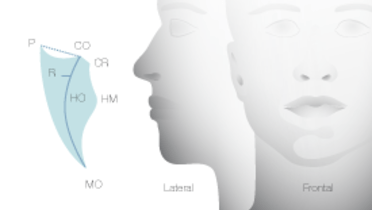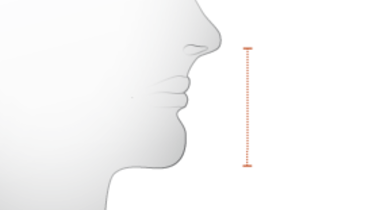-
0
Patient Assessment
- 0.1 Patient demand
- 0.2 Overarching considerations
- 0.3 Local history
- 0.4 Anatomical location
- 0.5 General patient history
-
0.6
Risk assessment & special high risk categories
- 5.1 Risk assessment & special high risk categories
- 5.2 age
- 5.3 Compliance
- 5.4 Smoking
- 5.5 Drug abuse
- 5.6 Recreational drugs and alcohol abuse
- 5.7 Parafunctions
- 5.8 Diabetes
- 5.9 Osteoporosis
- 5.10 Coagulation disorders and anticoagulant therapy
- 5.11 Steroids
- 5.12 Bisphosphonates
- 5.13 BRONJ / ARONJ
- 5.14 Radiotherapy
- 5.15 Risk factors
-
1
Diagnostics
-
1.1
Clinical Assessment
- 0.1 Lip line
- 0.2 Mouth opening
- 0.3 Vertical dimension
- 0.4 Maxillo-mandibular relationship
- 0.5 TMD
- 0.6 Existing prosthesis
- 0.7 Muco-gingival junction
- 0.8 Hyposalivation and Xerostomia
- 1.2 Clinical findings
-
1.3
Clinical diagnostic assessments
- 2.1 Microbiology
- 2.2 Salivary output
-
1.4
Diagnostic imaging
- 3.1 Imaging overview
- 3.2 Intraoral radiographs
- 3.3 Panoramic
- 3.4 CBCT
- 3.5 CT
- 1.5 Diagnostic prosthodontic guides
-
1.1
Clinical Assessment
-
2
Treatment Options
- 2.1 Mucosally-supported
-
2.2
Implant-retained/supported, general
- 1.1 Prosthodontic options overview
- 1.2 Number of implants maxilla and mandible
- 1.3 Time to function
- 1.4 Submerged or non-submerged
- 1.5 Soft tissue management
- 1.6 Hard tissue management, mandible
- 1.7 Hard tissue management, maxilla
- 1.8 Need for grafting
- 1.9 Healed vs fresh extraction socket
- 1.10 Digital treatment planning protocols
- 2.3 Implant prosthetics - removable
-
2.4
Implant prosthetics - fixed
- 2.5 Comprehensive treatment concepts
-
3
Treatment Procedures
-
3.1
Surgical
-
3.2
Removable prosthetics
-
3.3
Fixed prosthetics
-
3.1
Surgical
- 4 Aftercare
种植体覆盖义齿上下颌位关系
Key points
- 精确的患者上下颌位关系记录为建立正确的咬合、功能和美观效果提供了必要的临床文档
- 咬合堤轮廓可用于确定咬面高度、咬面垂直距离 (VDO)、唇线和笑线以及口腔周围支撑
- 咬合模型为技工室模拟颌运动提供轻松可靠的替代体。
上下颌位关系 - 咬面间记录
精确且可反复的患者上下颌位关系记录对于各种口腔修复都很重要。 它们可提供必要的临床文档,有助于牙医和技师创建满足患者的功能和美观需求的咬合关系。 当存在健康自然或正确修复的咀嚼齿系时,咬面间记录是规程临床步骤。许多不同材料可以用来创建此类记录并将其传输到颌架。
使用种植体稳定记录基托
管理缺齿患者通常需要更多临床技能和耐心来准确获得此记录,因为咬合堤(缺失齿系的替代体)固有的不稳定性会妨碍其准确性。 当存在种植体时,这种挑战实际上是无效的,不论治疗目标是固定修复体还是覆盖义齿修复体。
因此,存在 2 个或多个种植体可以保证支撑蜡咬合堤的上层记录基托的稳定性。 基托可能还包括专门设计的机械组件(适合种植体上凸形锚球的凹形外壳)与跨牙弓位置,可确保咬合堤的正确位置和稳定性。
制作蜡咬合堤和咬合模型
在主模型上制作蜡咬合堤的技术仍被视为确定上下颌位关系和咬面间记录的黄金标准。 蜡咬合堤可建立垂直距离并描绘咬面、唇线、笑线和中间线。
在正中颌位关系记录传输到颌架之前,已提出了许多技术(从简单的“咬合记录”到更为详尽的哥特式牙弓跟踪)来完成正中颌位关系记录。在颌闭合过程中仔细指引患者的下颌有助于咬面间记录过程记录正中颌位关系。 临床医师必须确保记录基托正确放置且完全放入,并且在设置咬面间记录材料时不会移动。 理想的记录材料能够快速设置且自由流动,以在闭合时提供较少阻力且设置牢固。无论是否使用面弓,都可记录上下颌位关系。咬合模型为技工室模拟颌运动提供轻松可靠的替代体。



